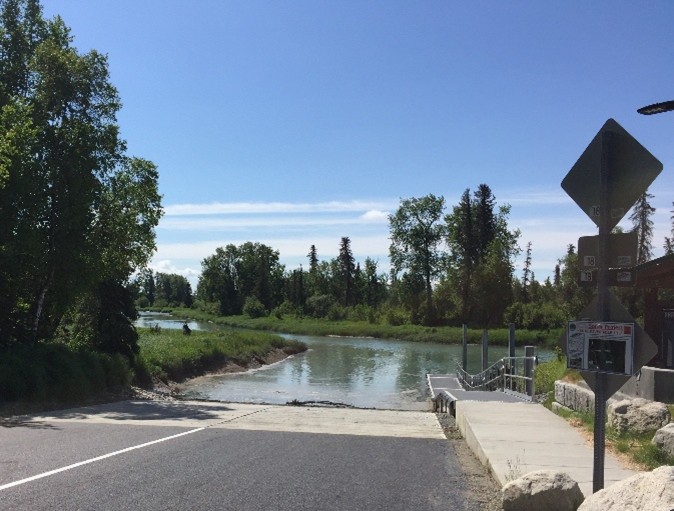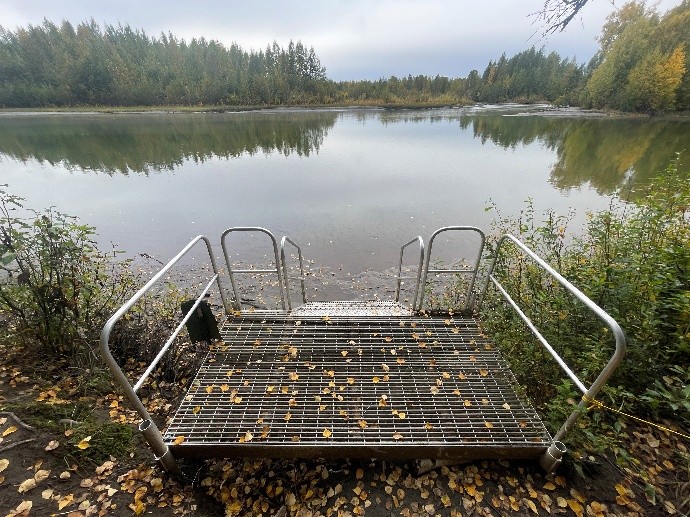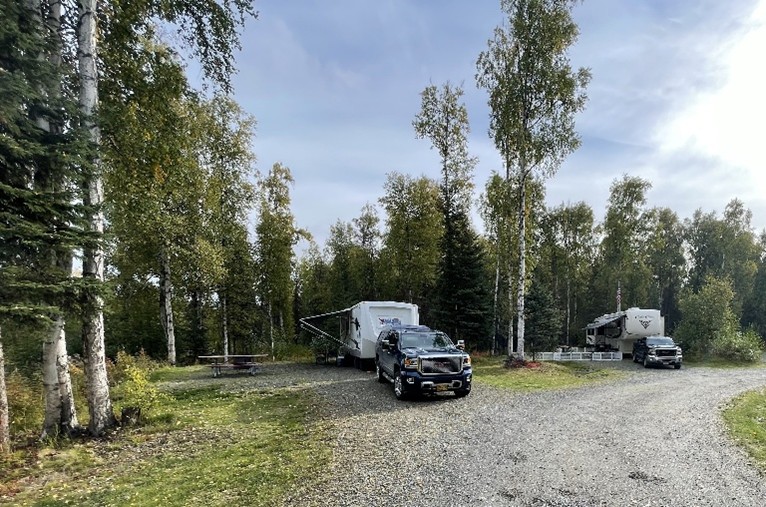Boating and Angler Access Program
Program Overview
The Federal Aid in Sport Fish Restoration Act, often referred to as the Dingell-Johnson Act or the Wallop-Breaux Amendment, provides funding for sport fisheries management and research, along with projects to improve recreational power boating and sport fishing access. This legislation created a model "user pay/user benefit" program through federal excise taxes and import duties placed on sport fishing equipment, recreational powerboats, and gasoline used in recreational boats. The tax revenue collected by the U.S. Treasury is transferred to the U.S. Department of Interior, Fish and Wildlife Service, which is the federal agency responsible for administering the Sport Fish Restoration program.
The Alaska Department of Fish and Game (ADF&G) is the only department in state government that is allowed to receive and use Sport Fish Restoration funds. This program will cover up to 75 percent of the cost of an eligible project and requires a 25 percent non-federal match, which is often met through the sale of sport fishing licenses.
The ADF&G Division of Sport Fish has regional and statewide staff who work with state and federal land managers and local governments to identify and facilitate design and construction, and fund capital improvements and maintenance of boating access sites. Projects are built to Americans with Disabilities Act guidelines and include boat launches, parking areas, restrooms, transient moorage, fish cleaning facilities, and other fresh water and marine access site improvements.
Funding Restrictions
Sport Fish Restoration grant funding is available for projects that benefit recreational boating and sport fishing. These funds cannot be used for projects that support subsistence, personal use, or commercial fishing groups. Subsistence and personal use fisheries are restricted to Alaska residents only and are not open to all users. In addition, the "methods and means" used in subsistence, personal use, and commercial fisheries - gillnets, dip nets, and set nets - are not allowed in sport fisheries, and are not subject to the excise tax that supports the Recreational Boating and Angler Access Program. Other users may use a Sport Fish Restoration funded project; however, they cannot displace recreational boaters and sport anglers.
Two Types of Projects: Recreational Boating and Angler Access (Non-Boating)
The Wallop-Breaux Amendment to the Sport Fish Restoration Act requires that a minimum of 15 percent of these funds allocated to Alaska must be used for recreational boating access projects. However, there is no such requirement on the use of these funds for angler access projects. Funding requests for angler access projects compete directly with other Division of Sport Fish Sport Fish Restoration programs, such as research, management, hatchery support, communications, and habitat restoration. Since a large portion of boating access funds comes from federal taxes on fuel and recreational powerboats, project proposals that primarily benefit non-motorized boats or diesel-powered boats do not qualify as recreational boating related projects. However, these proposals may be considered for Sport Fish Restoration angler access funding.

Recreational Boating Projects
The purpose of the Sport Fish Restoration Boating Access program is to provide facilities that create or add to public access for recreational boating.

Recreational Angler Access (Non-Boating) Projects
The purpose of the Sport Fish Restoration (Non-Boating) Angler Access program is to provide funding to aid the States in fish restoration and management.

Boating and Angler Access Campgrounds
Sport Fish Restoration Boating Access program also provides funding for the operation and maintenance of our ADF&G campgrounds located at the Susitna Landing (Kashwitna River) Public Use Facility in Willow, and the Little Susitna Public Use Facility west of Wasilla.
Project Identification
Recreational access needs are identified and assessed, by ADF&G Division of Sport Fish Area Management Biologists and Access Program staff. Regional biologists submit a list of project ideas annually to the Access Program Coordinator, who then reviews and researches the projects to ensure adherence to program regulations and Division of Sport Fish Access Program guidelines. Project ideas are ranked using an established criteria and are then prioritized based on project need and available funding.
Additional Resources
- Information on ADA accessible facilities can be found at the Alaska Department of Natural Resources, Division of Parks and Outdoor Recreation website.
- Information about the Federal Aid in Sport Fish Restoration program can be found on the U.S. Fish & Wildlife Service website.
- Information pertaining to legal public access to the states land and water can be found here in the Legal Access section of the ADF&G website.
- Alaska Lake Database (ALDAT)

